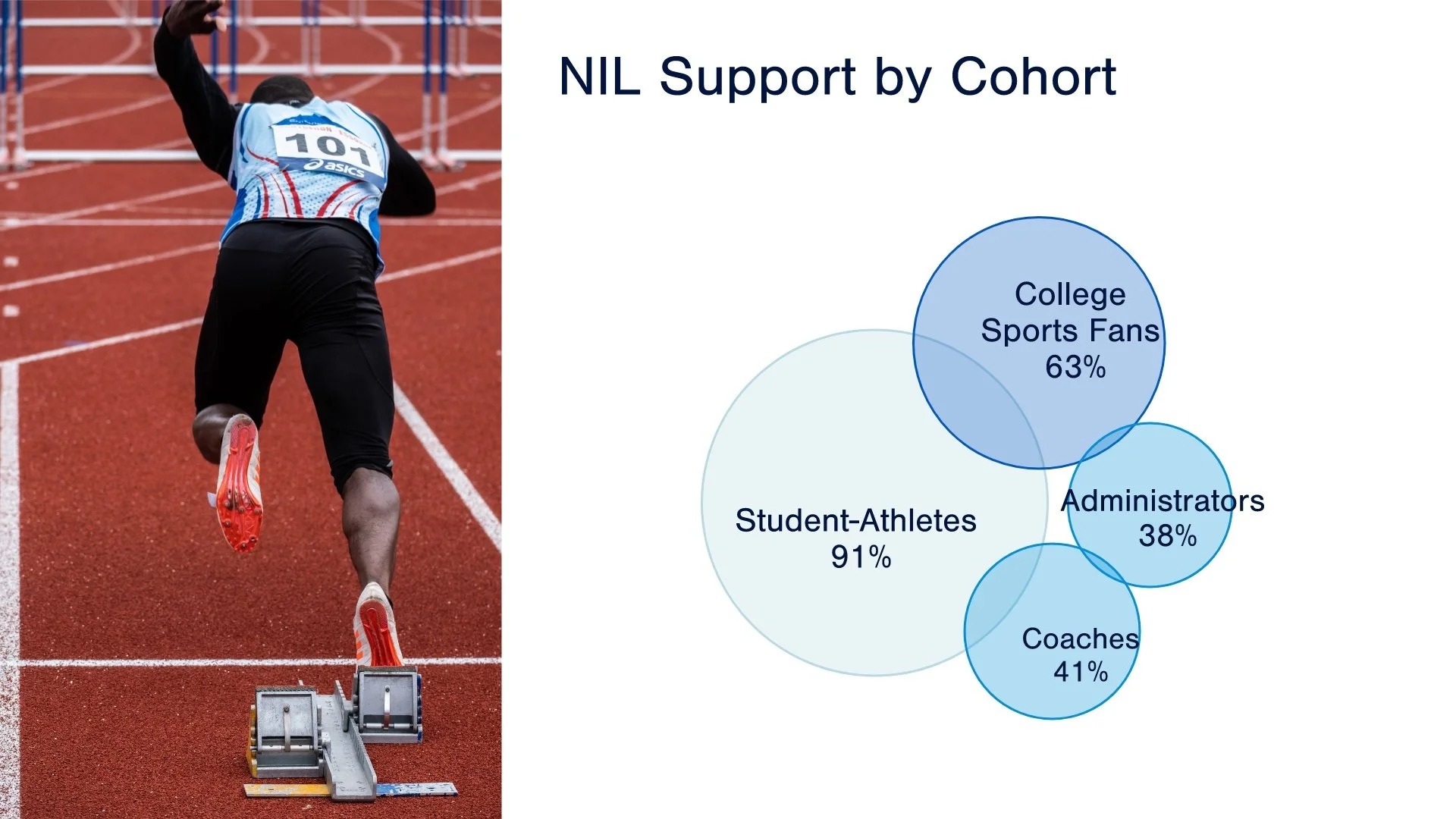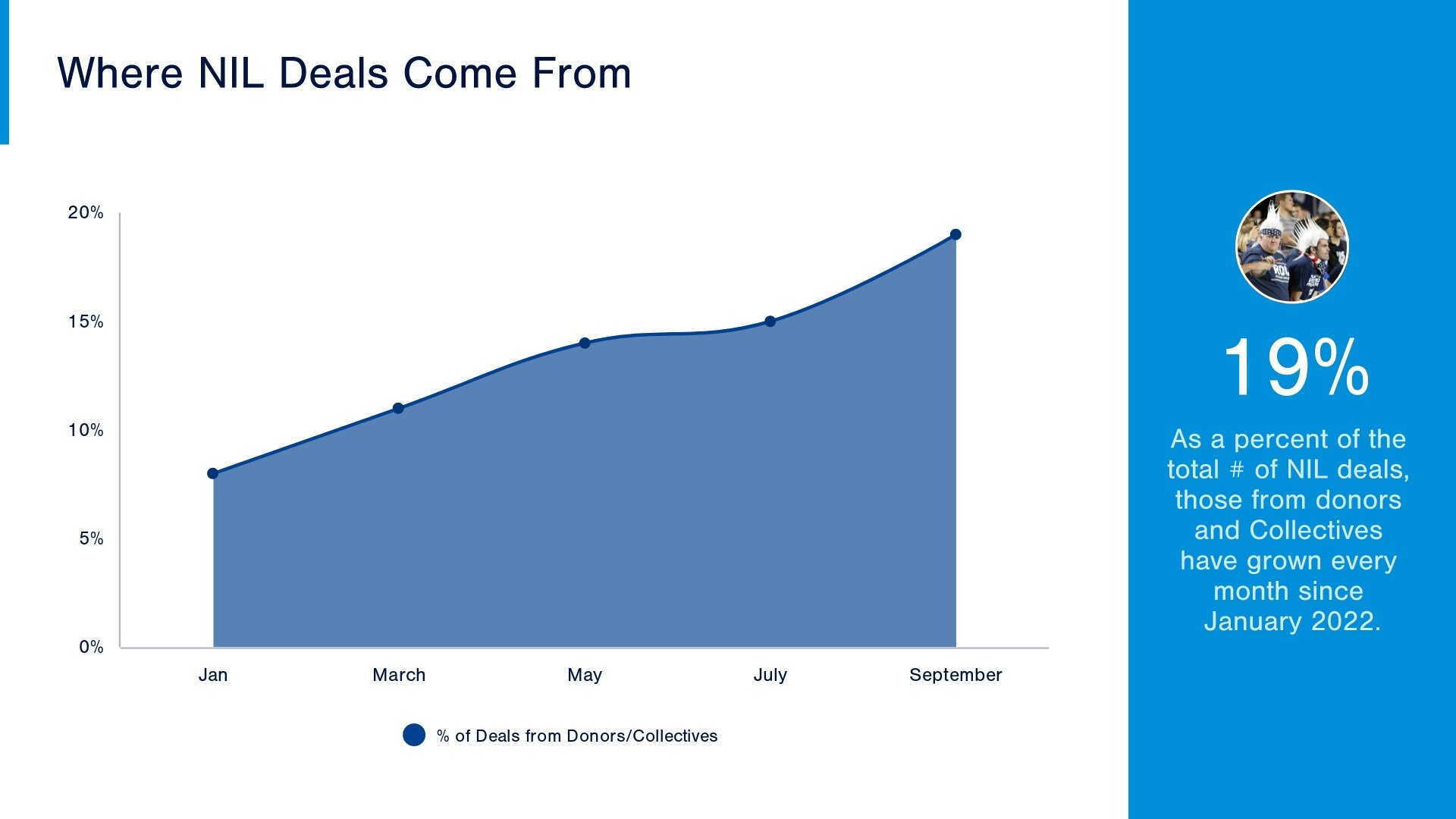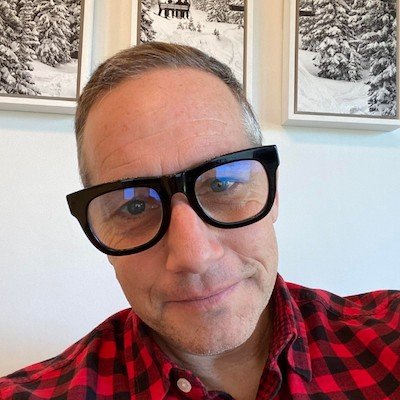Data on NIL Support, a New Marketplace, and the Financial Threat Posed by Collectives
Name, Image, Likeness Insider uses proprietary data and expert insights to explain the latest NIL developments.
BY THE NUMBERS: WHO SUPPORTS AND DOESN’T SUPPORT NIL
From Student-Athlete Insights Survey - August 2022
CBS Sports reporter Garry Parrish recently ran a story entitled Candid Coaches: More than one year in, is name, image and likeness helping or hurting college athletics? Parrish is a college basketball columnist and television analyst and his piece is the result of surveys of DI basketball coaches. The central question he asks: Is name, image and likeness helping or hurting college athletics? According to that survey of basketball coaches, 39% say it’s helping and 61% say it’s hurting.
Whether you believe NIL is helping or hurting - or as I prefer to study it - whether you support or do not support NIL - can almost entirely be predicted by your cohort. Many of you know of my student-athlete data, but beginning nearly a year ago, I also began periodically running surveys of coaches, administrators, and college sports fans. Though I survey coaches in 24 sports and run separate surveys for administrators, the results of my coach and administrator surveys are similar to Parrish’s. I find that 38% of administrators and 41% of coaches support NIL for student-athletes. 62% of administrators and 59% of coaches do not support NIL. The reasons cited for support are usually about fairness and economic opportunity. The reasons for lack of support are more complex and usually reference distraction from academic/athletic endeavors, threat to team dynamics, and scholarships/aid as compensation.
Why It Matters: Part of the intrigue is just how far apart student-athletes and college sports fans are from administrators and coaches. Unsurprisingly, over 90% of student-athletes support NIL. 63% of college sports fans support it, even as some believe it poses a threat to the very thing they love. Lots of people throughout the NIL ecosystem talk about its un-sustainability, referencing things like Collectives, gender equity, and the massive leaning toward NIL deals for football players versus other student-athletes. We should add to that list the imbalance of NIL support by cohort as another indicator as to NIL’s sustainability.
IN GIVING STUDENT-ATHLETES MORE OF WHAT THEY HAVEN’T ASKED FOR, BARSTOOL SPORTS LAUNCHES AN NIL MARKETPLACE
From Student-Athlete Insights September 2022 Survey of 1,050 Student-Athletes
Almost immediately after the NCAA announced its NIL interim policy back in June 2021, sports media and pop culture company Barstool Sports launched its Barstool Athlete program. Despite purpose of the Barstool Athlete program being only loosely defined at the time, today that program boasts 150,000 student-athletes - much due to the cache the Barstool brand carries among the college demographic. Fast forward to September 2022, Barstool has announced the launch of TwoYay, the latest entry into an already crowded field of NIL Marketplaces that includes heavy-hitters like INFLCR, Opendorse, and others.
TwoYay’s immediate advantage seems to its current size - roughly the same as INFLCR and Opendorse combined - and its ability to scale (it’s after all a major media player, particularly for athletes.) In addition, Barstool has has stated that it does not intend (at least for now) to charge a commission on athlete/brand transactions. So what’s their interest in managing a marketplace from which they will not derive any immediate income? Multiple sources, including Pete Nakos of On3, say that Barstool may access TwoYay for athletes to add into their own brand deals and invite to participate in other Barstool content.
Why It Matters: Since I began tracking the student-athletes’ NIL experiences, marketplaces have rarely appeared. While student-athletes might agree that more is better - as in more NIL marketplaces is better for them because it may increase their opportunities - it’s just not been an issue to date. The areas in which student-athletes seek “more” are support and education on contracts, finances, personal branding, social media, and NIL rules. And while there may be room for improvement, it’s marketplaces like Opendorse, INFLCR, MOGL, and others that are providing educational components within their marketplaces. It appears that Barstool’s TwoYay has no such plan.
collectives, not student-athletes, may be the athletic department’s real $$ threat
Before July 2021, there were all sorts of dire warnings about the things that NIL, if permitted, would destroy. Among the greatest concerns by those who work in college sports was NIL’s potential negative impact on the fundraising efforts of Athletic Departments. The thinking went like this: money from local businesses that had traditionally gone to Athletic Departments in the form of sponsorships would now be depleted as some or all of those funds would go to partnering with student-athletes directly. We’re less than 2 years into NIL and to my knowledge there has been no study to prove or disprove whether student-athletes’ NIL deals have syphoned money away from institutions - or conversely whether NIL has brought more interested businesses to the table that were not present previously.
Why It Matters: Based on my studies, I believe that the financial threat to athletic departments may not be from NIL (and student-athletes) generally, but from the very alumni/donors that have supported Athletic Departments in the past. From a study I just completed, the # of NIL deals from donors and Collectives have grown every month since January 2022. If the percent of NIL deals from donors and Collectives continues to rise, it seems impossible that it wouldn’t chip away at funds previously used to support the Athletic Department.
I consult with brands, agencies, and sports organizations on Name, Image, and Likeness - and provide on-demand courses for parents, athletes, coaches & administrators. I teach NIL in College Sports at the University of Vermont’s Grossman School of Business. I’m a SportsBusiness Journal Forty Under 40 Award winner and former co-founder of the marketing agency Fuse, which I operated for 20 years before selling in 2019.




